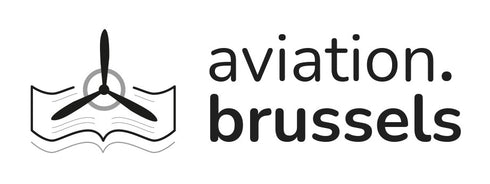The Indian Air Force and its aircraft I.A.F. GOLDEN JUBILEE 1932-82








Prix régulier 30,00 € TTC 6%
Characteristics
| Book cover finish | Perfect paperback |
| Condition | Good |
| Number of pages | 80 |
| Published date | 1982 |
| Language | English |
| Size | 21 x 28 x 1 cm |
| Author | Dilbagh Singh |
| Editor | Ducimus Books, London |
Description
For most of the citizens in the capital city of India, all activity came to a standstill for some minutes each day during the last week of January 1982. It was not the traffic nor the weather that caused this spontaneous aberration but 50 aircraft that thundered low over Raj Path, the main avenue of the city, in splendid fly-past to mark the 50th year of the Indian Air Force.
To the more astute than casual observer, the composition of the fly-past dramatically symbolized what the IAF is today, not only one of the world's largest and most competent air arms, but perhaps the only one to fully integrate and operate some of the most advanced and exotic aircraft types of Western, Soviet and local origin. Firstly, the seven MiG -23s, which symbolized the rapidity with which the IAF was inducting such advanced equipment. Then the 12 Jaguars which surely symbolized the IAF's inceptual and continuing ties with the Royal Air Force. The large contingent of 20 MiG -21s then symbolized the role played by HAL, India's aircraft industry that provides the bulk of the IAF's combat strength.
(...) The country is vast indeed, over 3 000 km from the arctic conditions of the Karakorams in Northern Kashmir to the steaming tropics of Kanyakumari, at the Peninsula's tip. It is some 2 800 km from the marshy Rann of Kutch, on the Arabian Sea in the aircraft types to enter the IAF inventory are the Jaguar and the MiG -23, in service with No's 5 and 10 Squadrons respectively.
(...) The rude awakening the nation experienced from the frontier war with China in October-November 1962 directly spurred massive expansion of the IAF during the years 1963-68. The attainment of a 45-squadron air force was programmed, re-equipment with supersonic combat aircraft initiated and surface-to-air guided missiles were inducted into the service. By the early 'seventies, notwithstanding the sub-continental conflicts of 1965 and 1971, the IAF had been transformed into one of the world's largest and most highly-trained air arms, possessing efficient supersonic fighter, ground attack, bomber-interdictor and logistic support units. A significant aspect of this achievement was that India, unlike some hostile neighbours, had built up her armed forces without compromising the freedom of her citizens, the principles of democracy and the rule of law.









